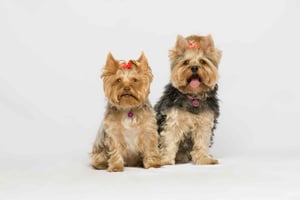Getting a new puppy is an exciting adventure and a big responsibility. The first training for puppy...
Flat-Coated Retriever Training: The Basics
Flat-Coated Retrievers are smart, friendly, and energetic dogs. Training them requires patience, consistency, and a lot of positive reinforcement. This article will provide an overview of the basics of Flat-Coated Retriever training and how to get started.
Understanding Your Flat-Coated Retriever
Before you start training your Flat-Coated Retriever, it is important to understand the breed. Flat-Coated Retrievers are intelligent, energetic, and loyal dogs. They are also highly trainable and respond best to positive reinforcement. It is important to keep training sessions short and fun to ensure that your Flat-Coated Retriever stays engaged and motivated.
Flat-Coated Retrievers need plenty of exercise and mental stimulation. They are also highly social and do best when they are around other people and animals. Taking your Flat-Coated Retriever to the dog park or on long walks is a great way to keep them engaged and happy.
Establishing Rules and Boundaries
Establishing rules and boundaries is essential for successful Flat-Coated Retriever training. Start by teaching your Flat-Coated Retriever basic obedience commands such as sit, stay, and come. Make sure to use positive reinforcement when teaching these commands and be consistent with your training. If your Flat-Coated Retriever begins to ignore your commands, it is important to stay calm and remind them of the commands.
It is also important to establish rules for the house. This includes where your Flat-Coated Retriever is allowed to go, what furniture they can access, and what behaviors are acceptable. Make sure to be consistent with these rules and reinforce them with positive reinforcement.
Potty Training
Potty training is an important part of Flat-Coated Retriever training. Start by taking your Flat-Coated Retriever to the same spot in the yard each time they need to go. Make sure to use a cue word such as “go potty” or “go outside” to help them understand what you want them to do. When they go to the bathroom in the correct spot, make sure to reward them with treats or praise.
It is also important to take your Flat-Coated Retriever outside frequently, especially after they wake up, after they eat, and after they play. This will help them learn that going outside is the right place to go potty.
Crate Training
Crate training is an important part of Flat-Coated Retriever training. Start by introducing your Flat-Coated Retriever to the crate and making sure they are comfortable in it. Place treats and toys in the crate to make it a positive experience. Once they are comfortable, start leaving them in the crate for short periods of time and gradually increase the amount of time they are in the crate.
It is important to use positive reinforcement when crate training. Give them treats and praise when they go into the crate and remain calm when you put them in the crate. If your Flat-Coated Retriever begins to bark or whine, it is important to remain calm and not let them out of the crate until they are calm.
Socialisation and Training
Socialisation is an important part of Flat-Coated Retriever training. Taking your Flat-Coated Retriever to the dog park or on walks is a great way to get them used to other people and animals. It is also important to introduce them to new environments and people in a positive way. Make sure to praise them when they are calm and reward them with treats when they interact with other people and animals.
It is also important to train your Flat-Coated Retriever to respond to commands. Start by teaching them basic obedience commands such as sit, stay, and come. Make sure to use positive reinforcement and be consistent with your training. It is also important to practice these commands in different environments so that your Flat-Coated Retriever can learn to respond to them in any situation.
Conclusion
Flat-Coated Retrievers are smart, friendly, and energetic dogs. Training them requires patience, consistency, and a lot of positive reinforcement. Establishing rules and boundaries, potty training, crate training, and socialisation are all important parts of Flat-Coated Retriever training. With patience, consistency, and positive reinforcement, you can successfully train your Flat-Coated Retriever to be a well-behaved, happy, and obedient dog.



